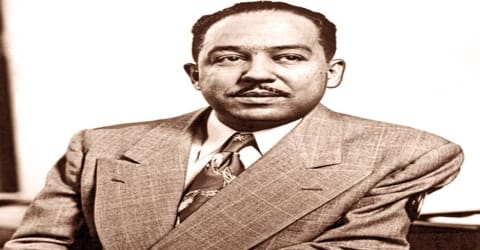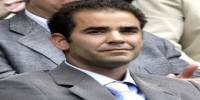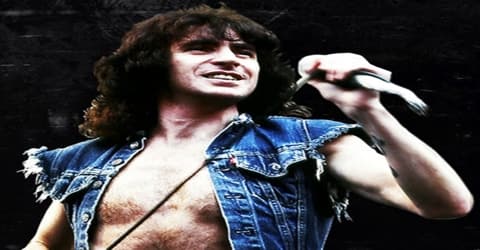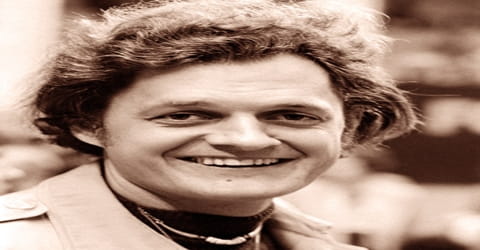Biography of Langston Hughes
Langston Hughes – American poet, social activist, novelist, playwright, and columnist.
Name: James Mercer Langston Hughes
Date of Birth: February 1, 1902
Place of Birth: Joplin, Missouri, U.S.
Date of Death: May 22, 1967 (aged 65)
Place of Death: New York City, U.S.
Father: James Nathaniel Hughes
Mother: Carrie (Caroline) Mercer Langston
Occupation: Poet, columnist, dramatist, essayist, novelist
Early Life
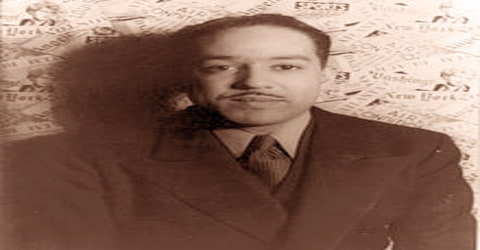
Langston Hughes, an American writer who was an important figure in the Harlem Renaissance and made the African American experience the subject of his writings, which ranged from poetry and plays to novels and newspaper columns, was born in Joplin, Missouri, on February 1, 1902, to Carrie M. Langston and James N. Hughes. His parents separated soon after his birth, and Hughes was raised mainly by his mother, his grandmother, and a childless couple, the Reeds. He attended public schools in Kansas and Illinois and upon graduating elementary school, Hughes was named the class poet, although he had never even written a poem. That title sparked an interest in writing poetry.
A poet and writer by profession, Hughes was an African-American. Through his exquisite literary compositions, he told stories of the sufferings and the life of the black people. During the 1920s when writers chose to stream their content, making their compositions worthy of only the highly literate, Hughes’ writings came as an elementary relief to those who could just about read and didn’t possess opulent knowledge. His poetry was straightforward and often meant for the black community.
He was one of the earliest innovators of the then-new literary art form called jazz poetry. Hughes is best known as a leader of the Harlem Renaissance in New York City. He famously wrote about the period that “the negro was in vogue”, which was later paraphrased as “when Harlem was in vogue”.
Gaining support for his work, he went on to write short stories, plays, and columns. It was his dauntless ability to express the black life with all its honesty that won him plenty of admiration later in his career. The columns he wrote largely uplifted the morale of the blacks who were subjugated to racism. His famous work ‘When Harlem was in Vogue’ received plaudits from sundry writers.
Childhood, Family and Educational Life
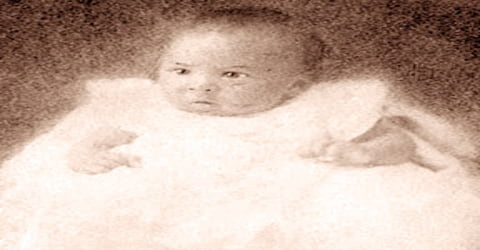
Langston Hughes, in full James Mercer Langston Hughes, was born on 1 February 1902 in Joplin, Missouri, to Native Americans with Afro-American ancestry, to Carrie M. Langston and James N. Hughes. His parents separated soon after his birth, and Hughes was raised mainly by his mother, his grandmother, and a childless couple, the Reeds. Langston Hughes grew up in a series of Midwestern small towns. Carrie’s mother took over the responsibility of bringing up little James Hughes in Kansas.
After the death of his grandmother, he moved to Ohio, where he finally lived with his mother. As a young boy, Hughes felt tremendously insecure as the love he sought from both parents was never received by him.
He attended public schools in Kansas and Illinois and upon graduating elementary school, Hughes was named the class poet, although he had never even written a poem. That title sparked an interest in writing poetry. Hughes graduated from high school in Cleveland, Ohio, in 1920. His high school companions, most of whom were white, remembered him as a handsome “Indian-looking” youth whom everyone liked and respected for his quiet, natural ways and his abilities. He won an athletic letter in track and held offices in the student council and the American Civic Association.
During high school in Cleveland, Hughes wrote for the school newspaper, edited the yearbook, and began to write his first short stories, poetry, and dramatic plays. His first piece of jazz poetry, “When Sue Wears Red,” was written while he was in high school.
Hughes had a very poor relationship with his father, whom he seldom saw when a child. He lived briefly with his father in Mexico in 1919. He agreed to live with his father, in want of knowing him better but their bond couldn’t thrive. After the summer, he returned to Cleveland, Ohio, to complete his high school. By then, his poetry skills had started getting even better. His teachers commended his writings and encouraged him to study at Columbia University.
Eventually, Hughes and his father came to a compromise: Hughes would study engineering, so long as he could attend Columbia. His tuition provided, Hughes left his father after more than a year. While at Columbia in 1921, Hughes managed to maintain a B+ grade average. He left in 1922 because of racial prejudice. He was attracted more to the African-American people and neighborhood of Harlem than to his studies, but he continued writing poetry.
In November 1924, he returned to the U.S. to live with his mother in Washington, D.C.
Personal Life

Some academics and biographers believe that Hughes was homosexual and included homosexual codes in many of his poems, as did Walt Whitman, whom Hughes said influenced his poetry. Hughes’s story “Blessed Assurance” deals with a father’s anger over his son’s effeminacy and “queerness”. The biographer Aldrich argues that, in order to retain the respect and support of black churches and organizations and avoid exacerbating his precarious financial situation, Hughes remained closeted.
James Hughes had one romantic involvement in his lifetime with Anne Marie Coussey, but owing to his lack of interest, the relation didn’t last long.
Hughes did, however, show a respect and love for his fellow black man (and woman). Other scholars argue for his homosexuality: his love of black men is evidenced in a number of reported unpublished poems to an alleged black male lover.
Career and Works
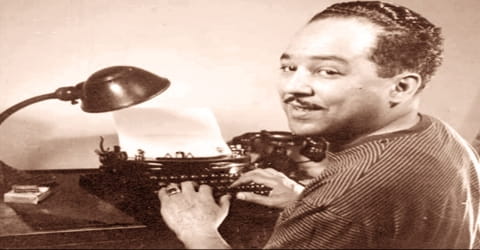
Hughes worked at various odd jobs, before serving a brief tenure as a crewman aboard the S.S. Malone in 1923, spending six months traveling to West Africa and Europe. In Europe, Hughes left the S.S. Malone for a temporary stay in Paris. There he met and had a romance with Anne Marie Coussey, a British-educated African from a well-to-do Gold Coast family; they subsequently corresponded but she eventually married Hugh Wooding, a promising Trinidadian lawyer. Wooding later served as chancellor of the University of the West Indies. During his time in England in the early 1920s, Hughes became part of the black expatriate community.
While working as a busboy in a hotel in Washington, D.C., in late 1925, Hughes put three of his own poems beside the plate of Vachel Lindsay in the dining room. The next day, newspapers around the country reported that Lindsay, among the most popular white poets of the day, had “discovered” an African American busboy poet, which earned Hughes broader notice. Hughes received a scholarship to and began attending, Lincoln University in Pennsylvania in early 1926. That same year, he received the Witter Bynner Undergraduate Poetry Award, and he published “The Negro Artist and the Racial Mountain” in The Nation, a manifesto in which he called for a confident, uniquely black literature:
We younger Negro artists who create now intend to express our individual dark-skinned selves without fear or shame. If white people are pleased we are glad. If they are not, it doesn’t matter. We know we are beautiful. And ugly too. The tom-tom cries and the tom-tom laughs. If colored people are pleased we are glad. If they are not, their displeasure doesn’t matter either.
First published in 1921 in The Crisis official magazine of the National Association for the Advancement of Colored People (NAACP) “The Negro Speaks of Rivers”, which became Hughes’s signature poem, was collected in his first book of poetry The Weary Blues (1926). Hughes’s first and last published poems appeared in The Crisis; more of his poems were published in The Crisis than in any other journal. Hughes’ life and work were enormously influential during the Harlem Renaissance of the 1920s, alongside those of his contemporaries, Zora Neale Hurston, Wallace Thurman, Claude McKay, Countee Cullen, Richard Bruce Nugent, and Aaron Douglas. Except for McKay, they worked together also to create the short-lived magazine Fire!! Devoted to Younger Negro Artists.
“The Weary Blues” won first prize in 1925 in a literary competition sponsored by Opportunity, a magazine published by the National Urban League. That summer one of his essays and another poem won prizes in the Crisis literary contest. Meanwhile, Hughes had come to the attention of Carl Van Vechten, a novelist, and critic, who arranged publication of Hughes’s first volume of poetry, The Weary Blues (1926).
By the time Hughes received his degree in 1929, he had helped launch the influential magazine Fire!!, in 1926, and he had also published a second collection of poetry, Fine Clothes to the Jew (1927), which was criticized by some for its title and for its frankness, though Hughes himself felt that it represented another step forward in his writing.

In 1930, his first novel, Not Without Laughter, won the Harmon Gold Medal for literature. At a time before widespread arts grants, Hughes gained the support of private patrons and he was supported for two years prior to publishing this novel. The protagonist of the story is a boy named Sandy, whose family must deal with a variety of struggles due to their race and class, in addition to relating to one another. The success of his novel made him adamant to pursue writing as a career. Around this time, he often traveled to other countries including the Soviet Union. After he returned from the Soviet Union, he was flabbergasted at the racial discrimination rife in the States.
In 1931, Hughes helped form the “New York Suitcase Theater” with playwright Paul Peters, artist Jacob Burck, and writer (soon-to-be underground spy) Whittaker Chambers, an acquaintance from Columbia. In 1932, he was part of a board to produce a Soviet film on “Negro Life” with Malcolm Cowley, Floyd Dell, and Chambers.
He traveled in the American South in 1931 and decried the Scottsboro case; he then traveled widely in the Soviet Union, Haiti, Japan, and elsewhere and served as a newspaper correspondent (1937) during the Spanish Civil War. He published a collection of short stories, The Ways of White Folks (1934), and became deeply involved in theatre. His play Mulatto, adapted from one of his short stories, premiered on Broadway in 1935, and productions of several other plays followed in the late 1930s. He also founded theatre companies in Harlem (1937) and Los Angeles (1939).
In 1932, Hughes and Ellen Winter wrote a pageant to Caroline Decker in an attempt to celebrate her work with the striking coal miners of the Harlan County War, but it was never performed. It was judged to be a “long, artificial propaganda vehicle too complicated and too cumbersome to be performed.”
Maxim Lieber became his literary agent, 1933–45 and 1949–50. (Chambers and Lieber worked in the underground together around 1934–35.)
His ideals moved politically to the left wing and thus, he wrote ‘The Ways of White Folks’ in 1934. In 1937, for his play ‘Don’t You Want to Be Free?’ he built the Harlem Suitcase Theatre. After the Second World War and its devastating consequences, his rigid political ideals slowly began to sober. In 1940, he wrote a humorous autobiography, titled ‘The Big Sea’, in which he expressed no political ideology.
In 1935, Hughes received a Guggenheim Fellowship. The same year that Hughes established his theatre troupe in Los Angeles, he realized an ambition related to films by co-writing the screenplay for Way Down South. Hughes believed his failure to gain more work in the lucrative movie trade was due to racial discrimination within the industry.
In Chicago, Hughes founded The Skyloft Players in 1941, which sought to nurture black playwrights and offer theatre “from the black perspective.” Soon thereafter, he was hired to write a column for the Chicago Defender, in which he presented some of his “most powerful and relevant work”, giving voice to black people. The column ran for twenty years.
Yet, he disagreed with any form of racial discrimination and socially condemned it through his books ‘Shakespeare of Harlem’ in 1942 and ‘Jim Crows Last Stand’, 1943. He also edited African American books in the last years of his career. In addition, he had written almost 20 plays and majorly translated the works of Federico Lorca and Gabriela Mistral.
Hughes edited five books of African American writing and worked with Arna Bontemps on another and on a book for children. He wrote some twenty plays, including “Mulatto,” “Simply Heavenly,” and “Tambourines to Glory.” He translated Federico Garcia Lorca, the Spanish poet, and Gabriela Mistral (1889–1957), the Latin American Nobel laureate poet, and wrote two long autobiographical works (a biography about oneself).
In 1943, Hughes began publishing stories about a character he called Jesse B. Semple, often referred to and spelled “Simple”, the everyday black man in Harlem who offered musings on topical issues of the day. Although Hughes seldom responded to requests to teach at colleges, in 1947 he taught at Atlanta University. In 1949, he spent three months at the University of Chicago Laboratory Schools as a visiting lecturer. Between 1942 and 1949, Hughes was a frequent writer and served on the editorial board of Common Ground, a literary magazine focused on cultural pluralism in the United States published by the Common Council for American Unity (CCAU).
Hughes documented African American literature and culture in works such as A Pictorial History of the Negro in America (1956) and the anthologies The Poetry of the Negro (1949) and The Book of Negro Folklore (1958; with Bontemps). He continued to write numerous works for the stage, including the lyrics for Street Scene, an opera with music by Kurt Weill that premiered in 1947. Black Nativity (1961; film 2013) is a gospel play that uses Hughes’s poetry, along with gospel standards and scriptural passages, to retell the story of the birth of Jesus. It was an international success, and performances of the work often diverging substantially from the original became a Christmas tradition in many black churches and cultural centers. He also wrote poetry until his death; The Panther and the Lash, published posthumously in 1967, reflected and engaged with the Black Power movement and, specifically, the Black Panther Party, which was founded the previous year.
From the mid-1950s to the mid-1960s, Hughes’ popularity among the younger generation of black writers varied even as his reputation increased worldwide. He wanted young black writers to be objective about their race, but not to scorn it or flee it. He understood the main points of the Black Power movement of the 1960s but believed that some of the younger black writers who supported it were too angry in their work. Hughes’s work Panther and the Lash, posthumously published in 1967, was intended to show solidarity with these writers, but with more skill and devoid of the most virulent anger and racial chauvinism, some showed toward whites. Hughes continued to have admirers among the larger younger generation of black writers. He often helped writers by offering advice and introducing them to other influential persons in the literature and publishing communities. This latter group, including Alice Walker, whom Hughes discovered, looked upon Hughes as a hero and an example to be emulated within their own work. One of these young black writers (Loften Mitchell) observed of Hughes:
Langston set a tone, a standard of brotherhood and friendship and cooperation, for all of us to follow. You never got from him, ‘I am the Negro writer,’ but only ‘I am a Negro writer.’ He never stopped thinking about the rest of us.
He also wrote stories for children on jazz, West Indies, and Africa. His most famous children’s work was a jointly written book by Arna Bontemps and himself, titled ‘Popo and Fifina’ in 1932.
In 1960 he wrote a poem that ran into several pages called ‘Ask Your Mama’ that bore great significance to black life and culture. His last book ‘The Panther and the Lash’ was posthumously published in 1967.
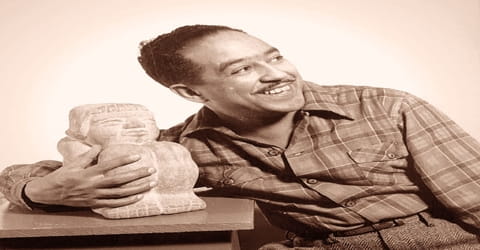
Hughes’s poetry was frequently published in the CPUSA newspaper and he was involved in initiatives supported by Communist organizations, such as the drive to free the Scottsboro Boys. Partly as a show of support for the Republican faction during the Spanish Civil War, in 1937 Hughes traveled to Spain as a correspondent for the Baltimore Afro-American and other various African-American newspapers. In August 1937, he broadcast live from Madrid alongside Harry Haywood and Walter Benjamin Garland. Hughes was also involved in other Communist-led organizations such as the John Reed Clubs and the League of Struggle for Negro Rights. He was more of a sympathizer than an active participant. He signed a 1938 statement supporting Joseph Stalin’s purges and joined the American Peace Mobilization in 1940 working to keep the U.S. from participating in World War II.
Among his other writings, Hughes translated the poetry of Federico García Lorca and Gabriela Mistral. He was also widely known for his comic character Jesse B. Semple, familiarly called Simple, who appeared in Hughes’s columns in the Chicago Defender and the New York Post and later in book form and on the stage. The Collected Poems of Langston Hughes, edited by Arnold Rampersad and David Roessel, appeared in 1994.
Awards and Honor

(The poem “Danse Africaine” as wall poem on a wall of the building at the Nieuwe Rijn (nl) 46, Leiden (Netherlands))
Hughes received numerous fellowships (scholarships), awards, and honorary degrees, including the Anisfield-Wolf Award (1953) for a book on improving race relations.
In 1954, he received the Anisfield-Wolf Award for a book that incorporated measures to bind diverse communities and races.
Hughes was awarded the ‘Spingarn Medal’ by NAACP in the category of most distinguished African American in 1960.
In 1963 he was awarded an honorary doctorate degree by the Howard University.
Towards the fag end of his career, he was named the ‘Poet Laureate of the Negro Race’, as he was the most original in representing the Negro race.
Death and Legacy
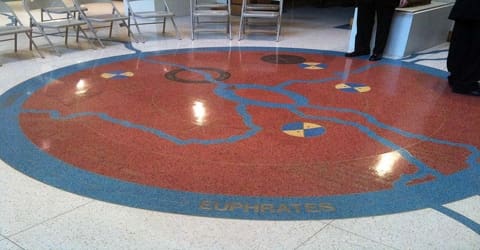
(Hughes’s ashes are interred under a cosmogram medallion in the foyer of the Arthur Schomburg Center in Harlem)
On May 22, 1967, Hughes died in New York City at the age of 65 from complications after abdominal surgery related to prostate cancer. His body was burnt and his ashes have been placed in the center of the foyer at Schomburg Center for Research in Black Culture in Harlem. His home at 20 East 127th Street in Harlem has been deemed a landmark by the New York Preservation Commission.
It is the entrance to an auditorium named for him. The design on the floor is an African cosmogram entitled Rivers. The title is taken from his poem “The Negro Speaks of Rivers”. Within the center of the cosmogram is the line:
“My soul has grown deep like the rivers”.
Hughes taught creative writing at two universities; had his plays produced on four continents; and made recordings of African American history, music commentary, and his own poetry. He was elected to the American Academy of Arts and Sciences and to the National Institute of Arts and Letters. His work, some of which was translated into a dozen languages, earned him an international reputation. Forty-seven volumes bear Hughes’s name.
Information Source:
